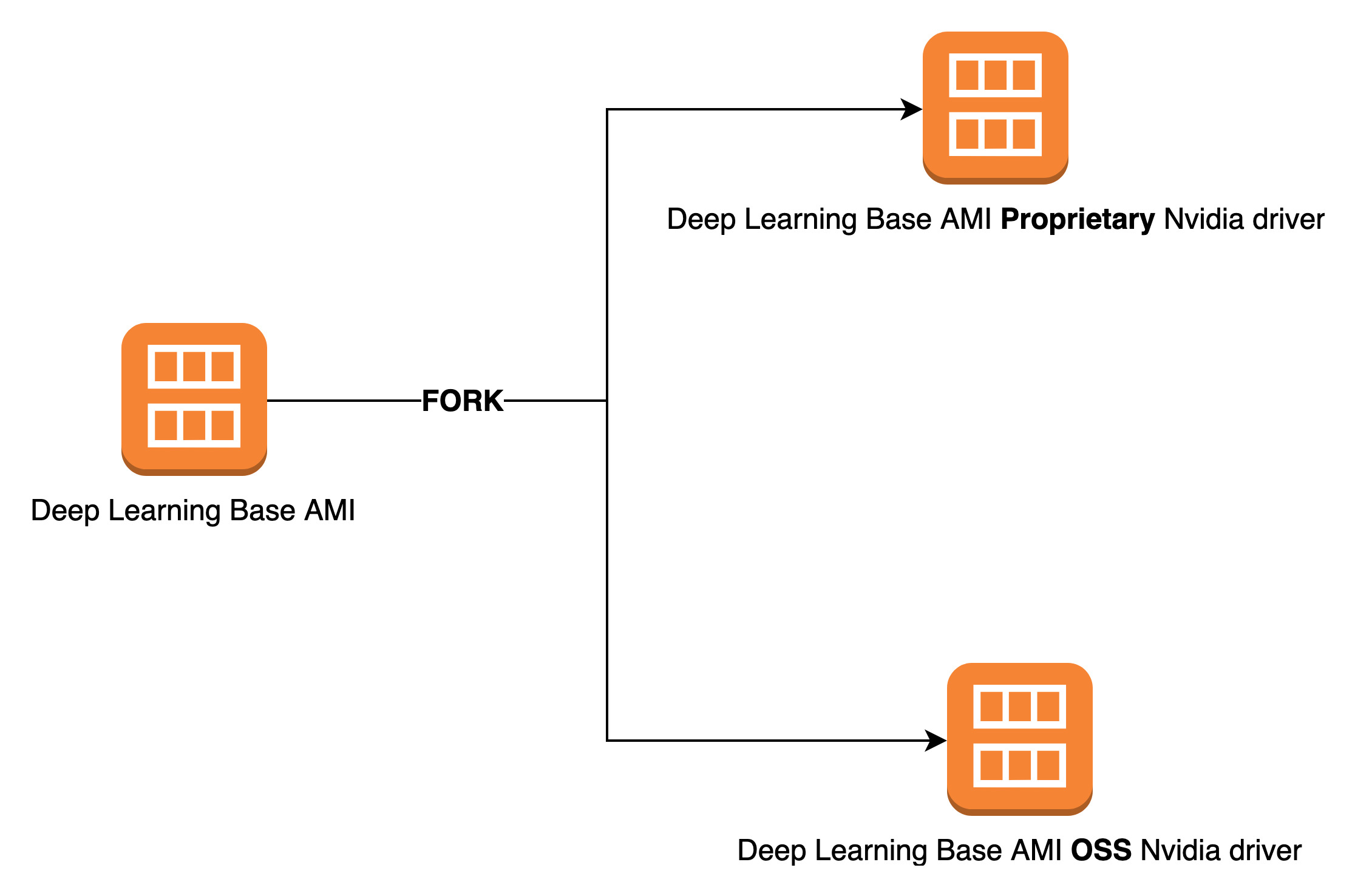Important NVIDIA driver changes to DLAMIs
On November 15, 2023, Amazon made important changes to Amazon Deep Learning AMIs (DLAMI) related to the NIVIDA driver that DLAMIs use. For information about what changed and whether it affects your usage of DLAMIs, see DLAMI NVIDIA driver change FAQs.
DLAMI NVIDIA driver change FAQs
What changed?
We split DLAMIs into two separate groups:
-
DLAMIs that use NVIDIA proprietary driver (to support P3, P3dn, G3)
-
DLAMIs that use NVIDIA OSS driver (to support G4dn, G5, P4, P5)
As a result, we created new DLAMIs for each of the two categories with new names and new AMI IDs. These DLAMIs are not interchangeable. That is, DLAMIs from one group don't support instances that the other group supports. For example, the DLAMI that supports P5 doesn't support G3, and the DLAMI that supports G3 doesn't support P5.

Why was this change required?
Previously, DLAMIs for NVIDIA GPUs included a proprietary kernel driver from NVIDIA. However, the upstream Linux kernel community accepted a change that isolates proprietary kernel drivers, such as the NVIDIA GPU driver, from communicating with other kernel drivers. This change disables GPUDirect RDMA on P4 and P5 series instances, which is the mechanism that allows GPUs to efficiently use EFA for distributed training. As a result, DLAMIs now use OpenRM driver (NVIDIA open source driver), linked against the open source EFA drivers to support G4dn,G5, P4, and P5. However, this OpenRM driver doesn't support older instances (such as P3 and G3). Therefore, to ensure that we continue to provide current, performant, and secure DLAMIs that support both instance types, we split DLAMIs into two groups: one with the OpenRM driver (that supports G4dn, G5, P4, and P5), and one with the older proprietary driver (that supports P3, P3dn, and G3).
Which DLAMIs did this change affect?
This change affected all DLAMIs.
What does this mean for you?
All DLAMIs will continue to provide functionality, performance, and security as long as you run them on a supported Amazon Elastic Compute Cloud (Amazon EC2) instance type. To determine the EC2 instance types that a DLAMI supports, check the release notes for that DLAMI, and then look for Supported EC2 Instances. For a list of currently supported DLAMI options and links to their release notes, see Deep Learning AMIs Release Notes.
Additionally, you must use the correct Amazon Command Line Interface (Amazon CLI) commands to invoke the current DLAMIs.
For base DLAMIs that support P3, P3dn, and G3, use this command:
aws ec2 describe-images --region us-east-1 --owners amazon \ --filters 'Name=name,Values=Deep Learning Base Proprietary Nvidia Driver AMI (Amazon Linux 2) Version ??.?' 'Name=state,Values=available' \ --query 'reverse(sort_by(Images, &CreationDate))[:1].ImageId' --output text
For base DLAMIs that support G4dn, G5, P4, and P5, use this command:
aws ec2 describe-images --region us-east-1 --owners amazon \ --filters 'Name=name,Values=Deep Learning Base OSS Nvidia Driver AMI (Amazon Linux 2) Version ??.?' 'Name=state,Values=available' \ --query 'reverse(sort_by(Images, &CreationDate))[:1].ImageId' --output text
Is there any loss of functionality with the newer DLAMIs?
No, there is no loss of functionality. The current DLAMIs provide all the functionality, performance, and security of the previous DLAMIs, provided you run them on a supported EC2 instance type.
Did this change affect Deep Learning Containers?
No, this change didn't affect Amazon Deep Learning Containers, because they don't include the NVIDIA driver. However, make sure to run Deep Learning Containers on AMIs that are compatible with the underlying instances.